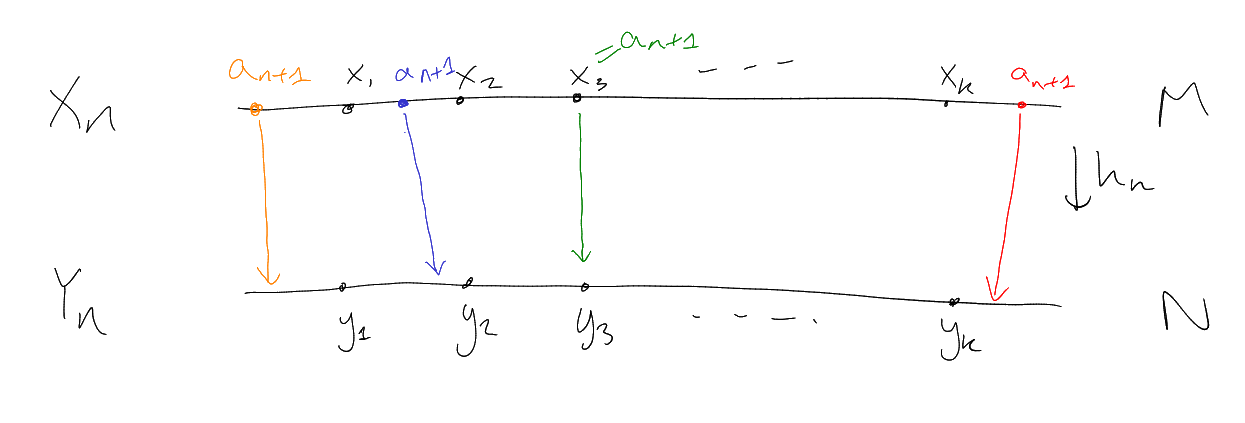3 Categoricity
Definition 3.1 (-categorical).
An -theory
is -categorical
if it has a unique model of size
up to isomorphism.
For now, assume our theories have infinite models and that
.
So we can find four different cases... surprisingly this is all.
Theorem (Morley’s Categoricity Theorem 1965).
Assuming that:
-
is a
complete theory in a countable language
-
We do not prove this theorem in this course. The statement is examinable, but the proof is not.
Dense linear orders (with no endpoints)
Definition 3.3 (Theory of dense linear orders).
Let
. We
define the theory in axioms:
-
(i)
Irreflexive: .
-
(ii)
Transitive: .
-
(iii)
Antisymmetric: .
-
(iv)
Dense: .
-
(v)
No endpoints: .
Note.
DLO is consistent, because .
Proof.
Let
with
countable. We need to construct an -isomorphism
,
i.e. an order preserving bijection.
We will use the back and forth method.
Let
and .
We construct a series of functions
such that:
-
(i)
is an order-preserving bijection.
-
(ii)
for each .
-
(iii)
,
.
Once we have done this, is an
order-preserving bijection
(i.e. an -isomorphism).
Use induction.
Base case: ,
,
.
Inductive step: Suppose
as required.
“Forth”: Construct an order preserving bijection
extending
with .
Enumerate
with .
Let so
that .
Define
where
is chosen according to the following cases:
-
If
for some ,
then put .
-
If
for all
then choose
such that
for all
(possible since no endpoints).
-
If
for all ,
then choose
such that
for all
(possible since no endpoints).
-
If there is some
such that ,
then choose
such that
(possible since
is dense).
Then is an order-preserving
bijection and
as desired.
“Back”: We need to construct an order-preserving map
extending
with
.
Exercise.
Then
satisfies the conditions. □
Note.
We used that
were countable.
The theory DLO is not uncountably categorical:
Consider , and
consider with the
lexicographic order (
if and only if
or and
). These
are both models of DLO (and have the same cardinality), but are not isomorphic (e.g. because the
first does not have any countable intervals, or because the second does not have all bounded
suprema).
Proof.
No finite models (because of the no end points axiom).
If ,
with both countable, then
and hence .
So by Los-Vaught test, DLO is complete. □
